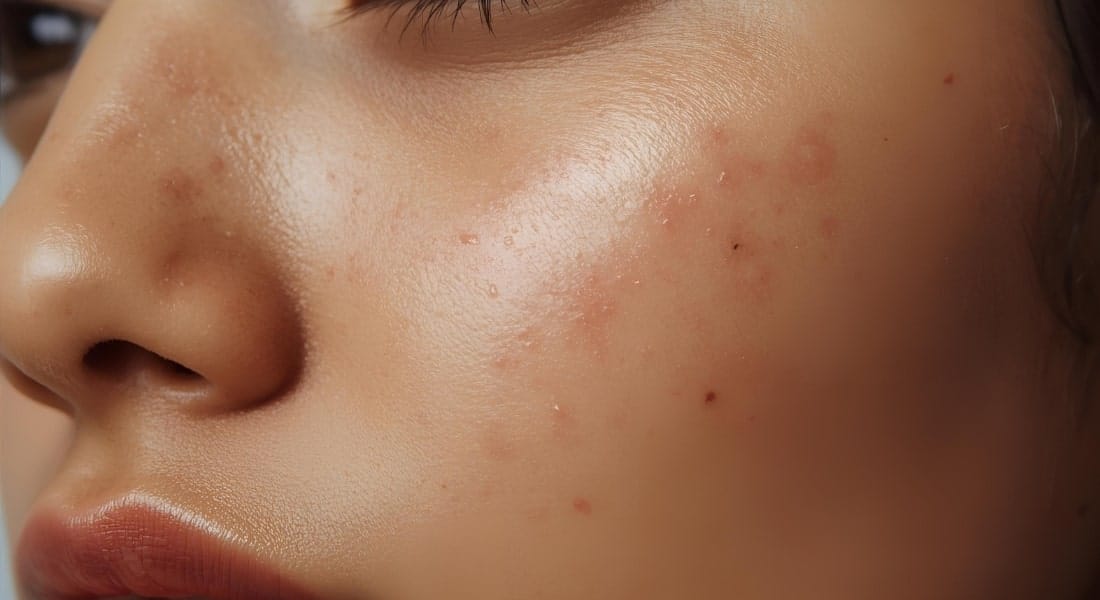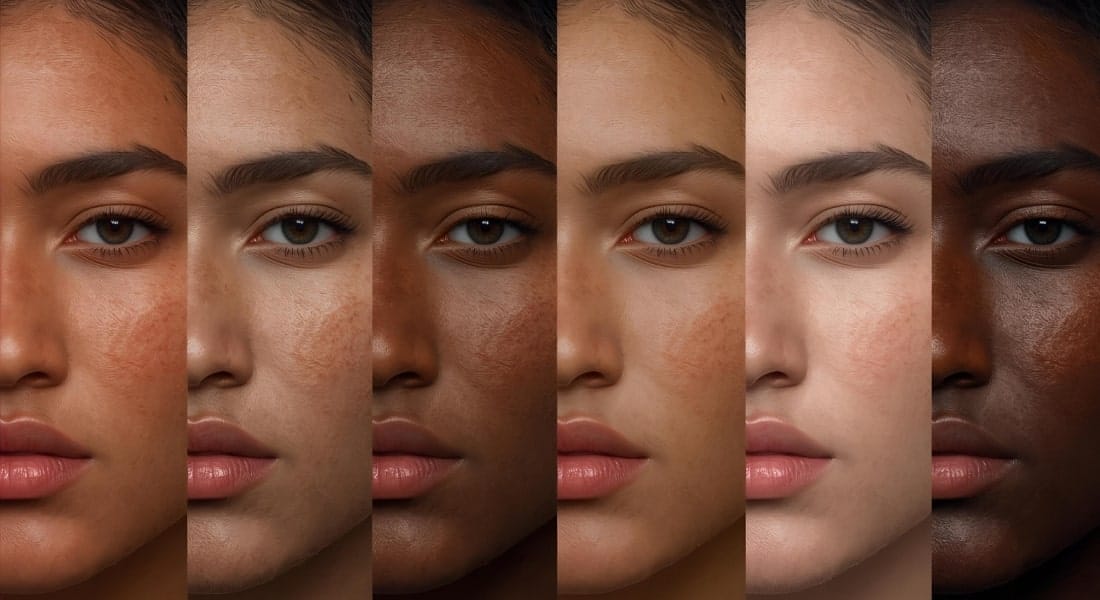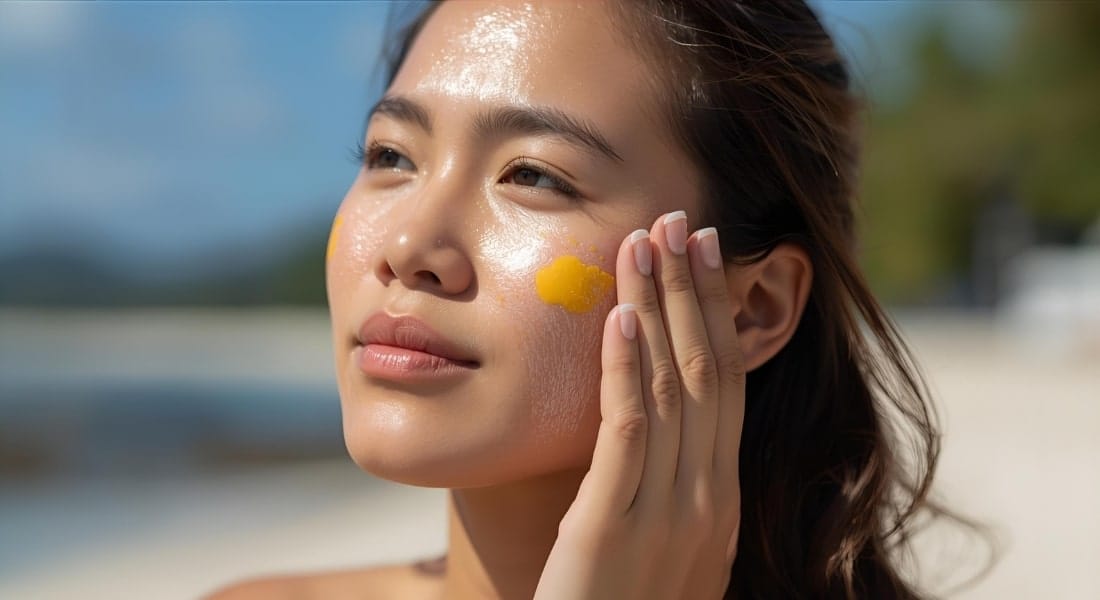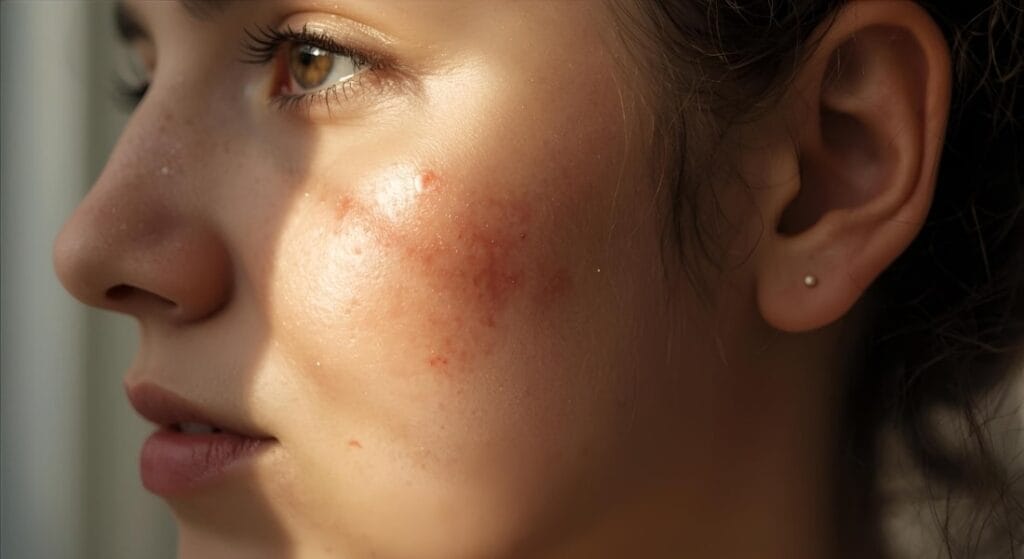Dark spots and hyperpigmentation are among the most common and persistent skin concerns, affecting countless individuals across diverse demographics. These unwelcome patches of discoloration can range from a few subtle freckles to extensive areas of uneven skin tone, often diminishing confidence and impacting overall skin aesthetics. While frequently associated with aging, the reality is that what causes dark spots and hyperpigmentation is a complex interplay of genetic predispositions, environmental factors, and lifestyle choices that can affect anyone, regardless of age or skin type.
At Aakaar Medical Technologies Ltd, we understand the profound impact skin pigmentation issues have on individuals. This comprehensive guide will delve into the science behind dark spots, exploring their origins, various types, and the most effective strategies for treatment and prevention. Designed to be both medically educational and accessible, we aim to empower you with knowledge. We will also highlight how Aakaar’s advanced, evidence-based solutions, such as our professional MELINE Range and effective Lytec Cream, offer targeted approaches to achieve clear, radiant skin, addressing hyperpigmentation solutions India has been seeking.
What Are Dark Spots and Hyperpigmentation? The Skin Science Basics
At its core, hyperpigmentation is a condition characterized by the darkening of skin areas due to an overproduction of melanin, the pigment responsible for our skin, hair, and eye color. When melanocytes—the cells that produce melanin—become overactive or are stimulated excessively, they deposit excess pigment into the skin, leading to the appearance of dark spots causes that can be superficial or extend deeper into the dermis.
Melanin production is a natural protective mechanism. When exposed to triggers like UV radiation, inflammation, or hormonal shifts, the body increases melanin synthesis to shield cells from damage. However, sometimes this response becomes dysregulated, resulting in localized areas of discoloration. These skin discoloration patches can vary in size, shape, and intensity, making uneven skin tone a significant concern for many. Understanding this fundamental process is the first step toward effective pigmentation treatment.
Common Causes of Dark Spots and Hyperpigmentation
The genesis of dark spots is rarely singular; it is often a confluence of factors. Identifying these dark spots causes is crucial for effective diagnosis and treatment.

1. Sun Exposure: The Primary Culprit
Unprotected exposure to ultraviolet (UV) radiation from the sun is undeniably the leading cause of hyperpigmentation. UVA and UVB rays trigger melanocytes to produce more melanin as a defense mechanism. While this natural tanning helps protect skin cells, prolonged or intense exposure can lead to an uneven, excessive melanin production, manifesting as:
- Sunspots (Solar Lentigines): These are flat, brown or black spots that appear on sun-exposed areas like the face, hands, and décolletage.
- Freckles (Ephelides): Small, harmless spots often found in fair-skinned individuals, which darken with sun exposure.
Consistent UV protection for skin is the cornerstone of prevention.
2. Hormonal Fluctuations: The Melasma Connection
Hormonal changes are a significant cause of dark spots and hyperpigmentation, particularly for a condition known as melasma. This type of hyperpigmentation presents as symmetrical, patchy, brown or grayish-brown discoloration, most commonly on the face (cheeks, forehead, upper lip, chin).
- Pregnancy: Often referred to as the “mask of pregnancy,” melasma is frequently triggered by increased estrogen and progesterone levels during gestation.
- Oral Contraceptives: Birth control pills, due to their hormonal content, can also induce or worsen melasma in susceptible individuals.
- Hormone Replacement Therapy (HRT): Similar to oral contraceptives, HRT can sometimes lead to melasma.
3. Post-Inflammatory Hyperpigmentation (PIH): The Aftermath of Injury
Any form of skin inflammation or injury can lead to PIH, where the skin produces excess melanin during the healing process. This is a very common dark spots cause, especially in individuals with darker skin tones. Common triggers include:
- Acne Scars: The most frequent cause, as breakouts can leave behind persistent dark spots long after the pimple has healed.
- Eczema & Psoriasis: Chronic inflammatory skin conditions often result in PIH.
- Burns, Cuts & Abrasions: Even minor skin trauma can lead to temporary or lasting discoloration.
- Aggressive Skincare Treatments: Improperly performed chemical peels, laser treatments, or microdermabrasion can sometimes cause inflammation that results in PIH.
4. Aging: The Cumulative Effect
As we age, our skin’s ability to regulate melanin production and shed dead skin cells diminishes. This, combined with decades of sun exposure, leads to the appearance of age spots (which are essentially solar lentigines). The skin also becomes more fragile, making it more prone to injury and subsequent PIH.
5. Lifestyle Factors & Medications
- Certain Medications: Some drugs, including certain antibiotics, anti-malarials, and even some over-the-counter pain relievers, can increase photosensitivity or directly cause pigmentation.
- Environmental Pollutants: Exposure to air pollution can generate free radicals that trigger melanin production.
- Fragrances & Cosmetics: Certain ingredients in perfumes or cosmetics can react with sunlight (photosensitization), causing dark spots where applied.
Types of Hyperpigmentation: A Closer Look
Understanding the specific type of hyperpigmentation is critical for effective pigmentation treatment.
- Melasma: As discussed, characterized by symmetrical, blotchy brown patches, primarily on the face. Hormonal influence is key.
- Post-Inflammatory Hyperpigmentation (PIH): Appears as darkened patches at the site of previous skin injury or inflammation. Can range from pink/red (if recent) to brown or black.
- Solar Lentigines (Sun Spots/Age Spots): Flat, well-defined dark spots caused by chronic sun exposure, often appearing on areas like the face, hands, and chest.
- Ephelides (Freckles): Small, light brown spots that often appear in clusters, particularly in fair-skinned individuals, and darken with sun exposure. These are typically benign.
- Post-Inflammatory Erythema (PIE): While not hyperpigmentation in the traditional sense, PIE is often mistaken for dark spots. It refers to persistent red or pink marks left after inflammatory acne, particularly common in lighter skin types. These marks are due to dilated or damaged capillaries, not excess melanin.
Risk Factors & Who Is More Prone
While hyperpigmentation can affect anyone, certain factors increase an individual’s susceptibility:

- Skin Tone: Individuals with darker skin tones (Fitzpatrick types III-VI) are generally more prone to hyperpigmentation, especially PIH and melasma, because their melanocytes are naturally more active and produce more melanin.
- Genetics: A family history of melasma or other pigmentation disorders increases risk.
- Hormonal Status: Pregnant women, women on oral contraceptives, or those undergoing HRT.
- Occupational Exposure: Individuals with professions that involve prolonged sun exposure (e.g., construction workers, farmers, athletes) are at higher risk for sunspots.
- Inflammatory Skin Conditions: Those with chronic acne, eczema, or psoriasis are more likely to develop PIH.
Treatment for Dark Spots on Face: Dermatological Approaches
Effective treatment for dark spots on face requires a multi-pronged approach, often combining professional procedures with consistent at-home care. It is crucial to consult a dermatologist for an accurate diagnosis and a personalized treatment plan.
Professional Dermatological Treatments
For stubborn or widespread hyperpigmentation, dermatologists employ a range of in-clinic procedures:
- Chemical Peels: Controlled exfoliation with acids (AHAs, BHAs, TCA) removes superficial layers of skin, reducing pigmentation and stimulating new cell growth. For patients looking for scientifically backed solutions, the MELINE Range offers professional treatments designed to target stubborn hyperpigmentation at its root, delivering exceptional pigmentation treatment results.
- Laser Therapy: Various lasers (e.g., Q-switched, picosecond, fractional non-ablative) target melanin selectively, breaking up pigment without damaging surrounding tissue. This is a highly effective hyperpigmentation solution in India for various types of dark spots.
- Microneedling: Creates microscopic punctures in the skin, which can help break up pigment and stimulate collagen, especially when combined with brightening serums.
- Microdermabrasion: A milder form of exfoliation that buffs away the outermost layer of dead skin cells to improve tone and texture.
Effective Topical Treatments
Topical agents are often the first line of defense and are crucial for maintaining results after in-clinic procedures.
- Hydroquinone (HQ): A powerful depigmenting agent that inhibits tyrosinase activity. While highly effective, it requires careful use under medical supervision due to potential side effects with prolonged use.
- Retinoids (Retinol, Tretinoin): Derivatives of Vitamin A that accelerate cell turnover, helping to shed pigmented cells and improve overall skin texture.
- Kojic Acid: Derived from fungi, it inhibits melanin production and is a popular alternative to hydroquinone, particularly in hyperpigmentation solutions India.
- Tranexamic Acid: Increasingly used topically and orally, it helps reduce melanin synthesis and calm inflammation, proving particularly effective for melasma.
- Vitamin C (Ascorbic Acid): A potent antioxidant that brightens the skin, inhibits tyrosinase, and protects against free radical damage.
- Niacinamide (Vitamin B3): Reduces the transfer of melanin from melanocytes to keratinocytes, thus preventing pigment from surfacing.
For patients seeking the best cream for hyperpigmentation that combines efficacy with a gentle approach, Lytec Cream is an excellent choice. This advanced topical cream, developed by Aakaar Medical Technologies, is formulated with a synergistic blend of dermatologically approved ingredients designed to reduce dark spots, brighten the complexion, and promote an even skin tone. It’s a powerful ally in your daily regimen for treatment for dark spots on face.
Prevention Strategies: How to Prevent Dark Spots on Skin
Prevention is always easier than correction. Integrating these strategies into your daily routine is the best cream for hyperpigmentation and dark spots.

- Strict Sun Protection: This is non-negotiable.
- Broad-Spectrum Sunscreen: Apply an SPF 30+ broad-spectrum sunscreen daily, even indoors and on cloudy days. Reapply every 2-3 hours if outdoors.
- Protective Clothing: Wear wide-brimmed hats, sunglasses, and UPF (Ultraviolet Protection Factor) clothing.
- Seek Shade: Avoid peak sun hours (10 AM to 4 PM).
- Gentle Skincare Routine: Avoid harsh exfoliants or aggressive scrubbing that can irritate the skin and trigger PIH.
- Manage Acne & Inflammation: Treat acne promptly and effectively to minimize post-inflammatory hyperpigmentation.
- Healthy Lifestyle: A balanced diet rich in antioxidants, adequate sleep, and stress management can contribute to overall skin health and resilience against pigmentation triggers.
Expert Advice: Why Medical Consultation Matters
While there are many over-the-counter products available, the most effective approach to managing and treating hyperpigmentation begins with a professional consultation. A dermatologist can:
- Accurately Diagnose: Differentiate between various types of dark spots (e.g., melasma vs. solar lentigines) to recommend the most appropriate pigmentation treatment.
- Identify Underlying Causes: Determine if hormonal factors, medications, or specific inflammatory conditions are contributing to the pigmentation.
- Formulate a Personalized Treatment Plan: Combine in-clinic procedures with medical-grade topical prescriptions and provide clear guidance on how to prevent dark spots on skin effectively.
- Monitor Progress & Adjust Treatment: Ensure safety and optimize results by tracking your skin’s response and making necessary adjustments.
Aakaar Medical Technologies is dedicated to partnering with medical professionals to provide them with the highest quality hyperpigmentation solutions India has to offer. Our products are designed for clinical efficacy and patient safety, ensuring that dermatologists can confidently offer leading-edge treatments.
Frequently Asked Questions for Professionals and Patients
Q1: What are the main causes of hyperpigmentation?
A: The main causes of hyperpigmentation include sun exposure (leading to sunspots and freckles), hormonal fluctuations (causing melasma), post-inflammatory responses to skin injury or inflammation (like acne scars), and the natural aging process.
Q2: Can sun exposure make dark spots worse?
A: Yes, absolutely. Sun exposure is the primary culprit behind dark spots causes and can significantly worsen existing hyperpigmentation, often making them darker and more resistant to treatment. Strict sun protection is essential for prevention and management.
Q3: Is hyperpigmentation permanent?
A: No, hyperpigmentation is generally not permanent. With consistent sun protection, appropriate topical treatments, and professional in-clinic procedures, most forms of dark spots can be significantly lightened or completely resolved. However, recurrence is possible if the triggers (especially sun exposure) are not managed.
Q4: What is the best cream for dark spots in India?
A: For effective reduction of dark spots, look for creams containing ingredients like retinoids, kojic acid, tranexamic acid, niacinamide, or Vitamin C. Lytec Cream from Aakaar Medical Technologies is a highly recommended solution, formulated with a synergistic blend of dermatologically approved ingredients specifically designed to address treatment for dark spots on face and promote an even skin tone.
Q5: How can professional treatments like MELINE help?
A: Professional treatments like those in the MELINE Range target stubborn hyperpigmentation with potent, clinically validated formulations. They work by deeply exfoliating pigmented cells, inhibiting melanin production, and stimulating skin renewal, leading to significant and lasting reduction in dark spots and melasma under expert supervision.
Q6: How long do results last?
A: The longevity of results depends on the type of hyperpigmentation, the chosen treatment, and most importantly, the patient’s adherence to post-care and sun protection protocols. With diligent sun protection and a consistent maintenance routine, results can last for a long time, though some types like melasma may require ongoing management.
Conclusion: Empowering Your Journey to Clearer Skin

Understanding what causes dark spots and hyperpigmentation is the first step towards achieving a clear, radiant complexion. From the pervasive impact of sun exposure to the intricate dance of hormones and inflammation, these common skin concerns demand a knowledgeable and consistent approach.
Aakaar Medical Technologies Ltd is committed to empowering both professionals and patients with cutting-edge solutions for pigmentation treatment. Our MELINE Range offers advanced professional-grade treatments for targeted results, while Lytec Cream provides an effective, daily topical solution for reducing dark spots and improving skin tone.
Don’t let hyperpigmentation define your skin’s story. Consult with your dermatologist today to identify the right course of action and explore Aakaar Medical Technologies’ evidence-based solutions for hyperpigmentation solutions India can trust. Your journey to luminous, even-toned skin begins here.

